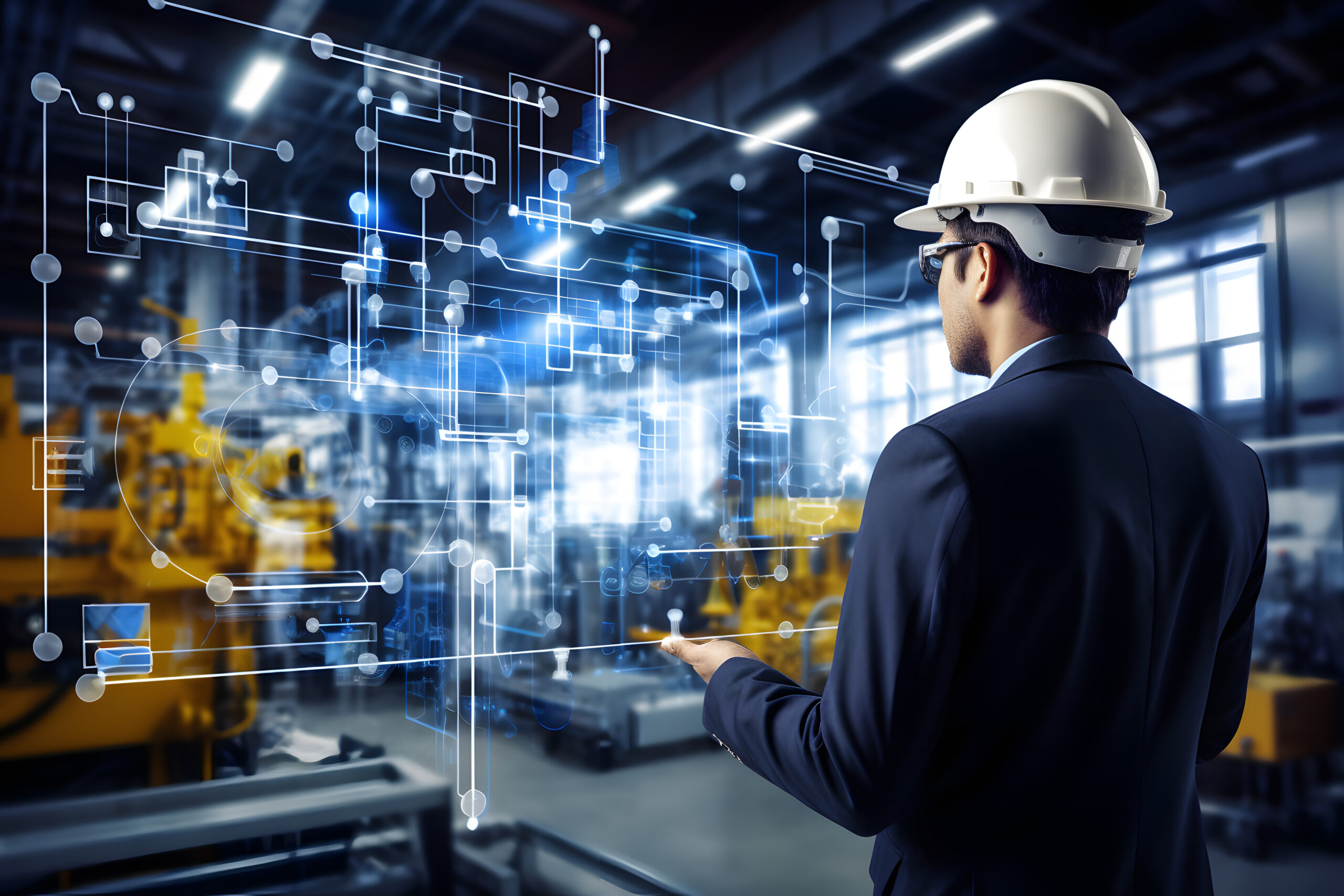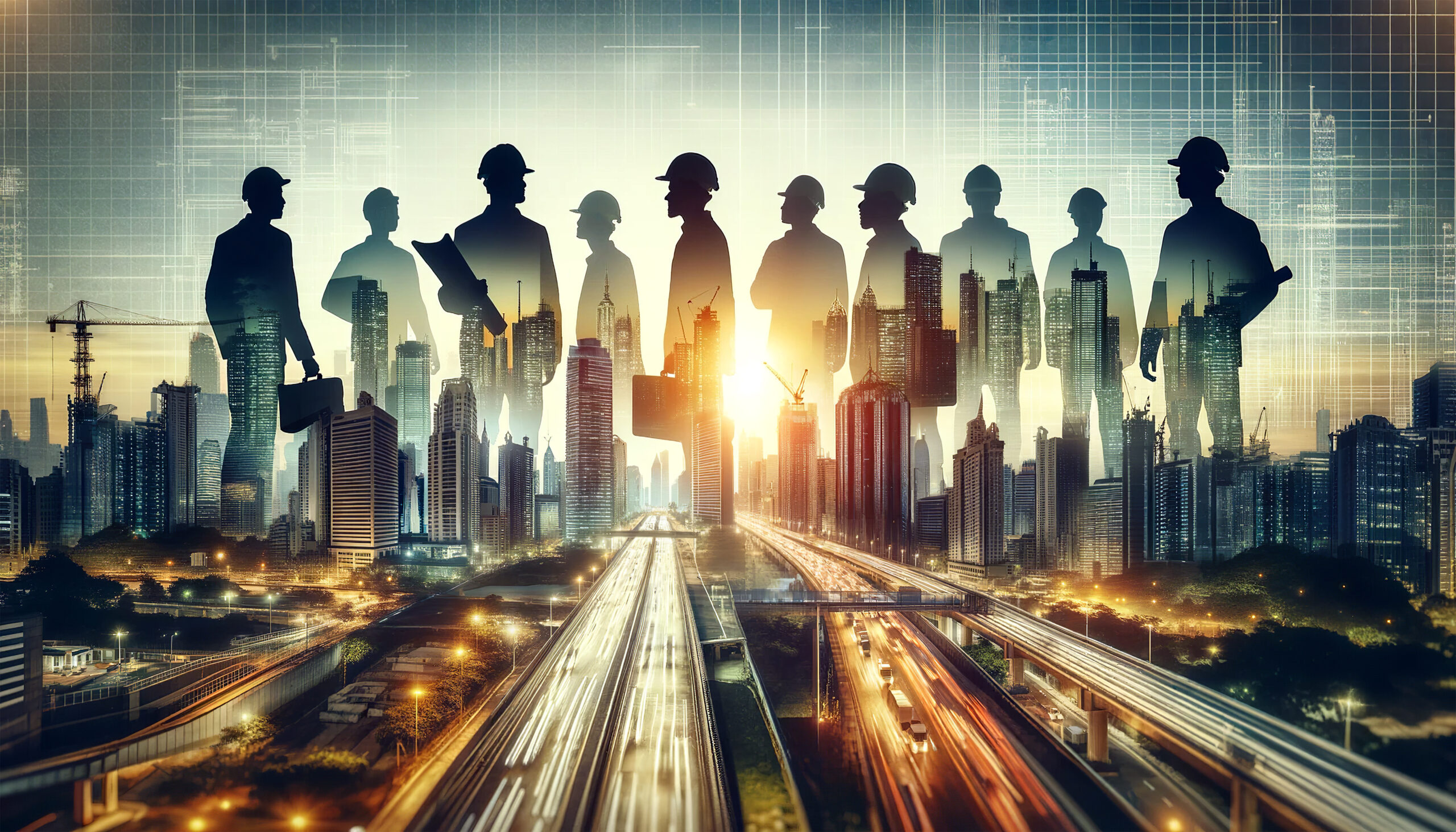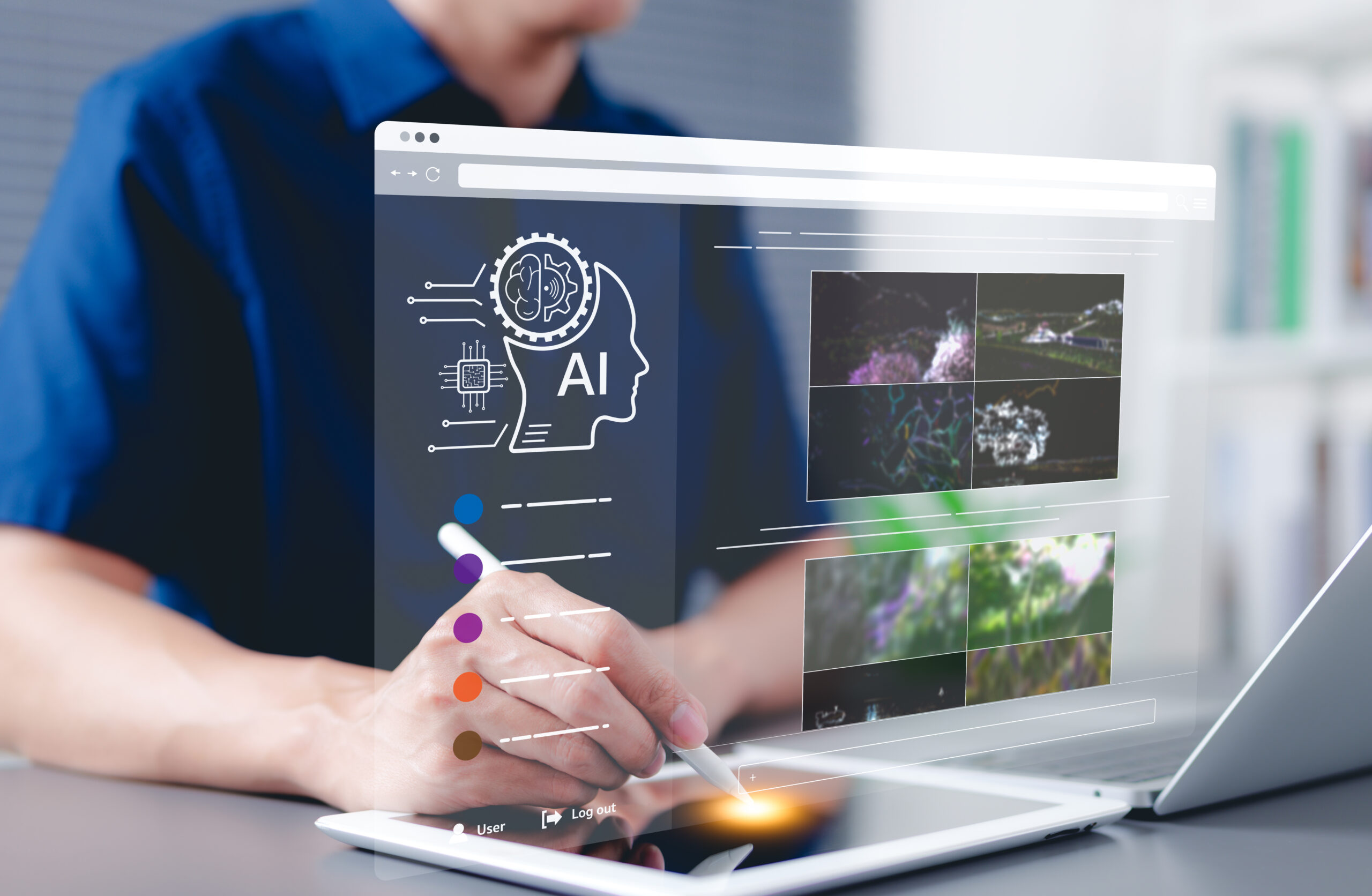How is the impact of AI transforming design, planning, and construction in the AEC industry? What are the key benefits of the impact of AI in improving project efficiency, reducing errors, and enhancing sustainability? What challenges do AEC firms face in adopting AI-driven solutions, and how can they maximize the impact of AI in their workflows?
The impact of AI on digital transformation in the Architecture, Engineering, and Construction (AEC) sector is revolutionizing how projects are designed, planned, and executed. AI-powered tools such as generative design, predictive analytics, and automation are helping firms optimize workflows, reduce costs, and improve project timelines. By analyzing vast datasets, AI can predict potential construction challenges, suggest smarter solutions, and enhance sustainability through optimized material selection and energy efficiency. As AI continues to evolve, firms that embrace these innovations will gain a competitive edge in an increasingly technology-driven industry.
Beyond efficiency and cost savings, the impact of AI is also redefining construction management and facility operations. AI-driven automation is streamlining labor-intensive tasks, predictive maintenance is preventing equipment failures, and smart building systems are enhancing occupant experiences. However, integrating AI into legacy systems presents challenges, requiring firms to invest in upskilling and strategic implementation. The impact of AI in the AEC sector is undeniable—firms that proactively adopt AI-driven solutions will be at the forefront of shaping the future of construction and design.
The Architecture, Engineering, and Construction (AEC) industry has long relied on manual processes and traditional methods. But times are changing as digital transformation revolutionizes how we work. Today’s AEC firms are discovering that integrating advanced technologies isn’t just an option anymore—it’s essential in the modern competitive landscape.
Tools like Building Information Modeling (BIM), cloud computing, and mobile applications are becoming the new foundation of modern construction projects. This makes it easier than ever for teams to collaborate, access real-time data, and manage projects efficiently.
However, Artificial Intelligence (AI) is a true game-changer when it comes to the technologies driving digital transformation. In this article, we’ll examine the impact of AI, exploring its incredible ability to process massive amounts of data, recognize patterns, and make smart decisions. By weaving AI into everyday workflows, firms aren’t just speeding up project timelines; they’re enhancing the quality and sustainability of our built environment in ways never thought possible.
Table of Contents:
Generative Design and AI-Assisted Modeling
Optimizing Project Planning and Feasibility Analysis
Enhancing Accuracy in Building Information Modeling (BIM)
AI in Construction Management and Execution
AI-Driven Automation in Construction Processes
Improving Safety Through AI-powered Monitoring and Site Analysis
AI’s Role in Sustainability and Smart Building Solutions
Smart Building Management Systems Powered by AI
Enhancing Sustainability Goals Through AI-Based Material Selection
AI in Operations and Facility Management
AI-Powered Asset Tracking and Workflow Automation
Enhancing Occupant Experience Through AI-Driven Insights
Data Security and Privacy Concerns
Integration Complexities with Legacy Systems
The Need for Upskilling and Workforce Adaptation
AI-Driven Design and Planning
When we discuss the impact of AI in AEC, we’re talking about more than just heightened efficiency. Artificial intelligence is transforming how AEC professionals approach their work—from design and planning to construction and facility management.
Generative Design and AI-Assisted Modeling
Imagine having a design partner that could explore thousands of possibilities in the time it takes to sketch one. That’s what generative design brings to the table. By simply inputting your requirements (space, materials, or budget), you can prompt AI algorithms to generate an incredible range of design options that meet your exact criteria.
Take Zaha Hadid Architects, for example. They’ve embraced generative AI tools to dramatically reduce the time and cost of creating their signature intricate designs. One of several AI success stories in AEC, this isn’t just about working faster—it’s about pushing the boundaries of what’s possible in architecture.
Optimizing Project Planning and Feasibility Analysis
Here’s where AI really shows its practical value in project planning. By diving deep into historical data and current project parameters, AI can spot potential challenges before they become problems and help create more realistic schedules. Think of it as having an incredibly experienced project manager who’s seen every possible scenario.
These smart algorithms consider everything from site conditions to material availability and labor resources, helping teams develop more accurate timelines and cost estimates. What’s particularly impressive is how AI-driven tools can automatically cross-check blueprints and timetables, catching errors before they reach the construction site. This proactive approach saves time and prevents costly mistakes. The impact of AI goes beyond saving time; it helps reduce overall risk for AEC companies and their clients.
Enhancing Accuracy in Building Information Modeling (BIM)
Building Information Modeling (BIM) has already transformed how we approach construction projects, but AI is taking it to new heights. Consider BIM as the digital twin of your building. Then, imagine enhancing that twin with AI that can automatically spot design clashes, optimize building systems, and update in real time.
These AI algorithms work tirelessly behind the scenes, analyzing complex BIM data to ensure everything fits perfectly. The result? More accurate models, fewer costly errors during construction, and finished buildings that truly match their original design intent. This is just one of the many reasons approximately 74% of AEC companies utilize artificial intelligence in one or more phases of their building projects.

Experience Our No-Obligation Trial: Uncover How Our Proven Engineering Outsourcing Services Can Elevate
Your Business


Experience Our
No-Obligation Trial: Uncover How Our Proven Engineering Outsourcing Services Can Elevate
Your Business
AI in Construction Management and Execution
We all know how unexpected challenges can derail construction projects. This is where AI’s predictive analytics capabilities shine. AI systems can forecast potential disruptions and suggest smart contingency plans by analyzing past projects, weather patterns, supply chain logistics, and countless other factors. It’s like having a crystal ball that helps project managers make informed decisions about resource allocation and scheduling adjustments, keeping projects on track even when challenges arise.
AI-Driven Automation in Construction Processes
Today’s construction sites are evolving rapidly, thanks to AI-powered automation. From robots that can lay bricks with precision to automated concrete pouring and welding systems, we’re seeing tasks that once required extensive manual labor being performed with incredible efficiency. Take Automated Architecture (AUAR), for instance, which is transforming traditional building sites into portable “microfactories.”
And it doesn’t stop there—AI-controlled drones are now handling site inspections and monitoring progress, providing project managers with real-time insights while reducing the need for manual oversight.
Improving Safety Through AI-powered Monitoring and Site Analysis
Safety has always been paramount in construction, and AI is becoming an invaluable partner in protecting workers. AI-powered cameras and sensors can instantly detect unsafe behaviors or equipment issues, alerting supervisors before accidents happen. It’s almost like having thousands of extra pairs of eyes on the job site, constantly watching for potential hazards.
But it goes beyond real-time monitoring; AI systems analyze years of safety data to identify patterns and suggest improvements to site layouts and procedures. This proactive approach isn’t just saving lives; it’s reducing downtime and costs associated with accidents.
AI’s Role in Sustainability and Smart Building Solutions
When it comes to sustainability in construction, AI is proving to be an incredible ally. Consider how AI algorithms can analyze building designs and suggest tweaks to HVAC systems, lighting, and insulation that significantly reduce energy consumption.
We’re already seeing remarkable results: AI integration in HVAC systems has achieved energy savings of 15.8%, translating to substantial cost reductions. These AI systems can even predict a building’s energy performance before construction begins, helping teams choose materials and systems that will ensure long-term efficiency and a smaller carbon footprint.
Smart Building Management Systems Powered by AI
The impact of AI doesn’t end when construction ends. The real magic happens once a building is up and running. AI-powered smart building management systems act like a building’s brain, continuously monitoring and adjusting operations based on real-time conditions and usage patterns. These systems learn from occupant behaviors and preferences, creating comfortable environments while minimizing energy waste.
It’s like having a highly attentive building manager who never takes a break, ensuring optimal resource use while keeping occupants comfortable and productive.
Enhancing Sustainability Goals Through AI-Based Material Selection
Choosing the right materials is crucial for sustainable construction, and AI makes this complex decision-making process much more manageable. AI tools can evaluate countless materials against project-specific criteria, considering factors like durability, embodied energy, and recyclability. This thorough analysis ensures that material choices align with both sustainability goals and practical requirements, resulting in environmentally responsible and cost-effective buildings throughout their lifecycle.
AI in Operations and Facility Management
Imagine knowing exactly when equipment needs maintenance before it shows any signs of failure. AI brings that knowledge to facility management through predictive maintenance strategies. By analyzing data from sensors throughout building systems, AI can predict potential equipment failures and schedule maintenance at just the right time.
This approach prevents unexpected breakdowns, extends equipment life, and significantly reduces maintenance costs. It’s yet another reason why a significant majority (84%) of AEC firms plan to increase their investment in AI over the next five years.
AI-Powered Asset Tracking and Workflow Automation
Managing a modern building’s complex array of systems and equipment is no small feat. AI-powered asset tracking makes this task manageable by providing real-time insights into equipment usage, maintenance needs, and potential issues. Integrating AI with IoT creates a smart ecosystem where repairs and replacements are handled proactively rather than reactively. Digital twins (virtual replicas of physical assets) allow facility managers to monitor building performance remotely and make data-driven adjustments for optimal efficiency.
Enhancing Occupant Experience Through AI-Driven Insights
Here’s where AI really shows its value to end-users. By learning from occupant preferences and behaviors, AI-powered systems can create personalized environments that enhance comfort and productivity. They automatically adjust lighting, temperature, and ventilation based on usage patterns and external conditions. They even handle security, recognizing unusual patterns and alerting facility managers to potential threats. The result? Spaces that actively contribute to occupant satisfaction and well-being long after construction has ended.
Challenges and Considerations
When we consider the overall impact of AI, we generally see a net positive with incredible possibilities for the future. However, there are some challenges to overcome. Among the most important hurdles include data security, integration challenges, and the need for upskilling.
Data Security and Privacy Concerns
Security concerns are very real with AI systems processing vast amounts of sensitive information (from building blueprints to financial records and personal data). Construction projects generate incredibly sensitive information that, if compromised, could have serious consequences. That’s why it’s crucial for companies to invest in robust cybersecurity measures, including encrypted storage, strict access controls, and AI-driven threat detection.
Compliance with regulations like GDPR isn’t just about checking boxes; it’s about protecting valuable project information and maintaining trust.

Experience Our No-Obligation Trial: Uncover How Our Proven Engineering Outsourcing Services Can Elevate
Your Business


Experience Our
No-Obligation Trial: Uncover How Our Proven Engineering Outsourcing Services Can Elevate
Your Business
Integration Complexities with Legacy Systems
Today’s organizations are grappling with the challenge of integrating cutting-edge AI solutions with existing systems that weren’t designed for this level of technology. Many AEC firms still rely on legacy systems, and transitioning to AI-powered processes requires careful planning and significant investment. The key is ensuring that AI applications work seamlessly with existing tools like BIM and ERP systems.
Companies need to assess their current technology infrastructure and develop a strategic, phased approach to integration that minimizes disruption while maximizing efficiency.
The Need for Upskilling and Workforce Adaptation
As AI transforms the AEC sector, we’re seeing a significant shift in the skills needed to succeed. While AI can handle many repetitive tasks, it’s also creating demand for new expertise in areas like AI engineering, data analysis, and digital project management. This means AEC firms need to invest in comprehensive training programs to help their teams adapt to AI-driven workflows. Collaboration between industry and educational institutions is becoming crucial to ensure that future professionals are prepared for this new landscape.
Conclusion
When we look at how AI has transformed the AEC sector, it’s truly remarkable. From enhancing our design capabilities to making projects more efficient, AI-powered tools offer benefits that are becoming indispensable. The impact of generative design, predictive analytics, and automated construction processes goes beyond improving workflows—we’re seeing increased accuracy, reduced costs, and faster project delivery across the board.
Looking ahead, the possibilities are endless. We’re moving toward a future that might include fully autonomous construction sites, AI-powered urban planning, and even algorithms that can optimize entire city layouts for sustainability and efficiency. The potential integration of AI with technologies like augmented reality (AR), virtual reality (VR), and blockchain could take collaboration, transparency, and project management to new heights.
For AEC firms, the message is clear: embracing digital transformation and investing in AI-driven solutions isn’t just about staying current—it’s about leading the way into a new era of construction and design. The firms that recognize this and foster a culture of innovation will be the ones shaping the future of our built environment. The choice is simple: embrace the change and thrive, or resist and risk falling behind in an increasingly digital world.




